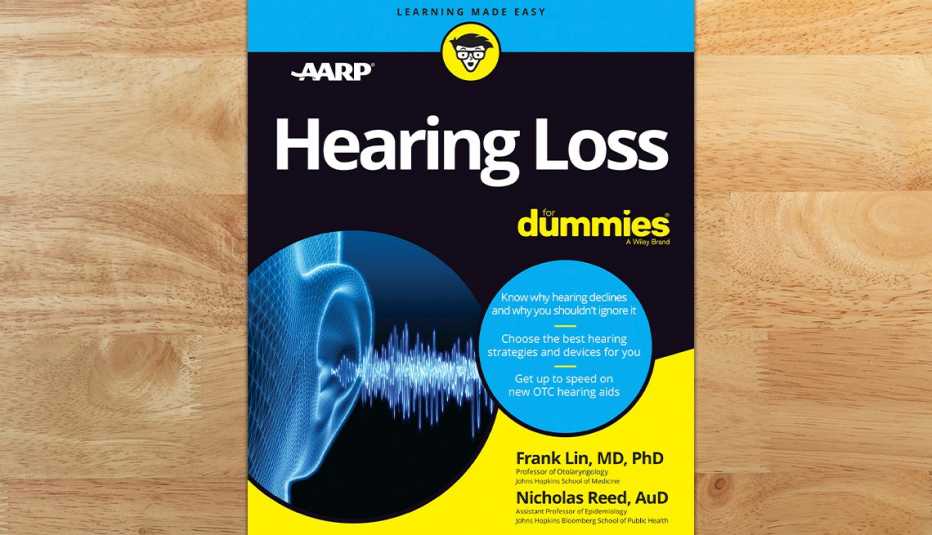AARP Hearing Center


If you’re among the 30 million Americans struggling to keep up with conversations in noisy restaurants or battling with your spouse over the TV volume, your life is about to get better.
High-quality over-the-counter (OTC) hearing aids that are more affordable than those bought through health professionals are hitting stores now. And you won’t need a prescription.
“Almost 90 percent of people with hearing loss have mild to moderate losses, and the vast majority could be helped by OTC hearing aids,” says audiologist Nicholas S. Reed, assistant professor at the Johns Hopkins University Bloomberg School of Public Health and coauthor of AARP’s Hearing Loss for Dummies. “This market has been innovative but hasn’t had this kind of competition before.”
Pharmacies and other retailers began to stock OTC hearing aids in mid-October. But shopping for these hearing aids, which are also sold online, may not be quite as simple as going to the drugstore to buy aspirin or even reading glasses.
Not only do these long-anticipated devices let millions of adults with mild to moderate hearing loss purchase hearing aids without a prescription, they also don’t require an exam or consultation with an audiologist or doctor.
This should mean far lower costs for most consumers since traditional hearing aids can run $2,000 to $4,000 a pair, according to Kate Carr, president of the Hearing Industries Association trade group in Washington, D.C. Premium aids can cost as much as $6,000 per ear.
“It’s going to be the wild, wild west for a couple of years” because OTC hearing aids are a whole new category of help for people who are hearing-impaired, said Frank Lin, M.D., director of the Cochlear Center for Hearing and Public Health at the Johns Hopkins Bloomberg School of Public Health and Dummies coauthor.
“Everybody is figuring out how to price them, how to market them,” said Lin, speaking at an AARP virtual event. “Right now, the prices we are seeing, $200 to $1,500, are all over the map. What is the price that consumers are willing to pay?” He predicted that prices would drop, perhaps to the cost of wireless earbuds.
As manufacturers raced to get their products to market, we talked with audiologists, consumer advocates, industry experts and the makers of major U.S. hearing aid brands to answer your most pressing questions.


Hearing Loss for Dummies
Authors Frank Lin and Nicholas Reed at the Johns Hopkins School of Medicine lay out the steps to hearing health, including new advice on just-released over-the-counter hearing aids.
3 types of hearing aids
1. Behind-the-ear (BTE) models. The device tucks in behind your ear. Sound is delivered into your ear canal via a thin, hollow tube or via a wire and speaker bud that tucks into your ear canal.
These don’t fit tightly in your ear, so natural sound can also enter. Traditionally, these devices’ larger size means more power and more features than smaller hearing aids can deliver.
2. In-the-ear and “invisible” in-the-ear-canal models. These small hearing aids are more difficult to see — a cosmetic advantage.
Completely in-the-canal models may be best for mild hearing loss. Their small size has traditionally meant less power and fewer features, Reed and Lin note in their book. But that could change with competition driving innovations in the months and years ahead.
3. Rechargeable earbuds. They look like conventional Bluetooth wireless earbuds for your phone or listening to music and are best for part-time use for a few hours at a time, such as when you’re dining in a noisy restaurant.
“Our products are for situational use,” says John Luna, CEO of Nuheara, maker of OTC hearing aid earbuds called HP Hearing Pro. “Most first-time wearers with perceived mild to moderate hearing loss will have a need sometimes but not all the time. They’re not meant to be worn 12 to 14 hours a day, as you would for moderate to moderate/severe hearing loss.”
Your questions, answered!
Consumers may have trouble navigating store shelves and websites to determine which models and features not only properly fit their ears but also fit their budgets. Here is some advice to help you get started.
Q. How do I know if an OTC hearing aid is right for me?
A. OTC hearing aids can help if you have mild to moderate hearing loss. For severe or profound hearing loss, you’ll need to see an audiologist or another hearing professional.
• Mild to moderate loss. You have trouble hearing a conversation in a noisy restaurant, ask people frequently to repeat what they said or turn up shows or music to levels that are uncomfortable for others in the room. Or you may have difficulty understanding what people say if you can’t see their lips moving.





























































More on health
5 Myths About Hearing Loss
Understanding misconceptions can help your loved ones6 Drugs That Can Harm Your Hearing
More than 600 drugs have been linked to hearing loss and tinnitusWill Medicare cover my really expensive hearing aids?
No, you have to pay for hearing care, devices, fittings